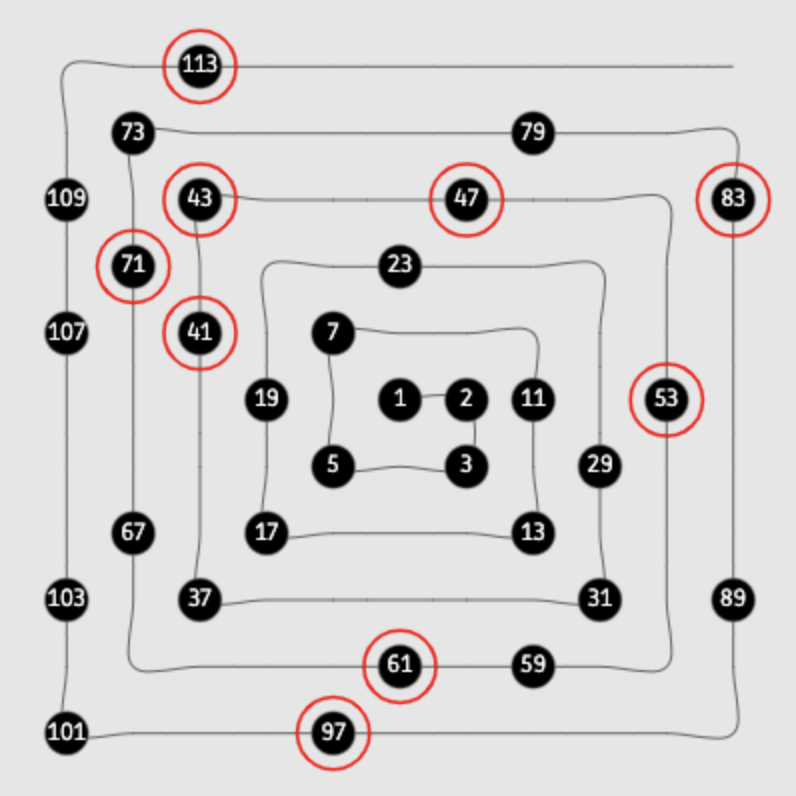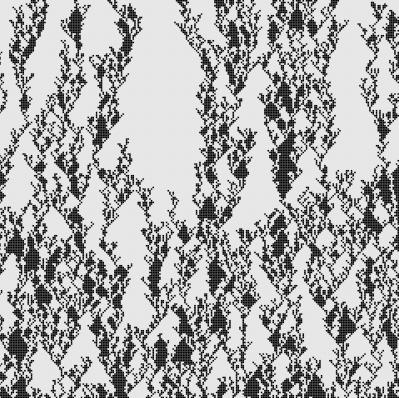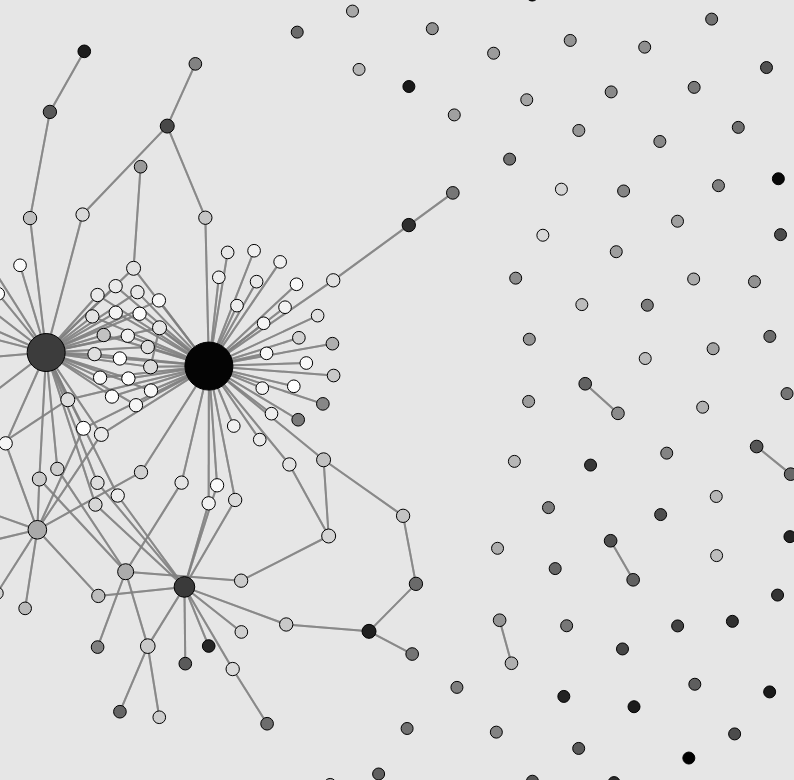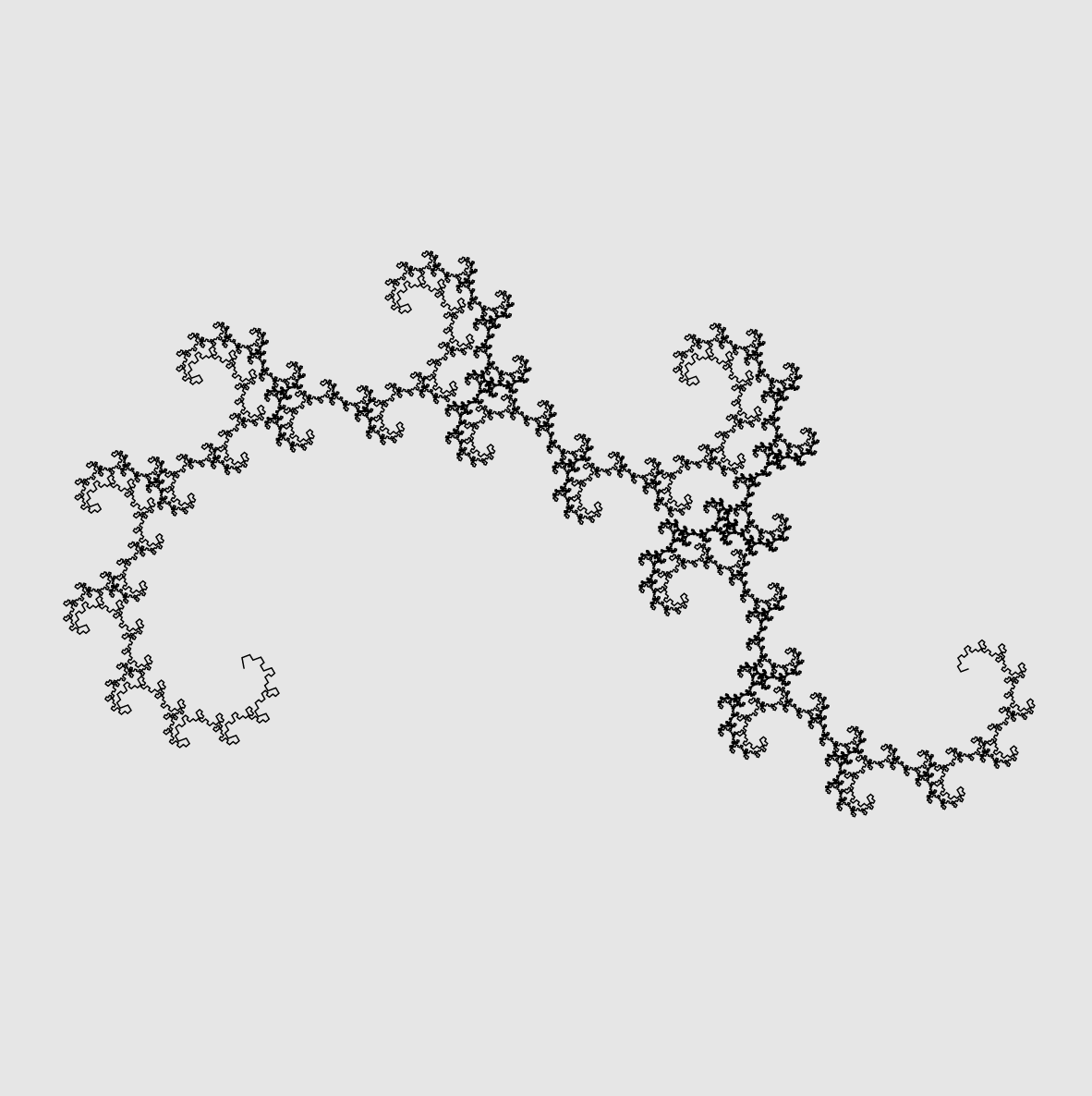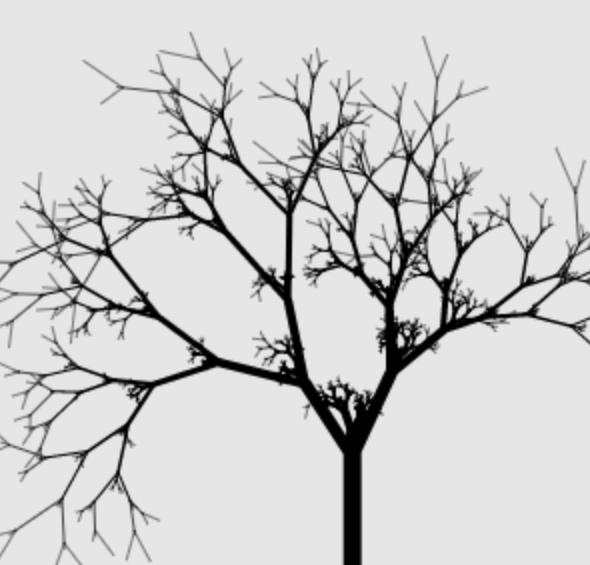“Prime Time”
The distribution of primes along number spirals
This explorable is about prime numbers. It illustrates interesting patterns that emerge if you arrange the positive natural numbers $1,2,3,….$ and so forth in a regular pattern in the plane and look at the distribution of the primes in the arrangement. Although prime numbers, as one might expect, don’t follow some regular repetitive pattern, they are also not distributed completely at random. Instead, in all arrangements streaks and fragments of neighboring primes emerge. These structures are related to prime generating polynomials like the famous polynomial discovered by Leonard Euler.
“Anomalous Itinerary”
Lévy flights
This explorable illustrates the properties of a class of random walks known as Lévy flights. To get the most out of this explorable, you may want to check out the explorable Albert & Carl Friedrich on ordinary random walks and diffusion first.
“Kelp!!!”
A stochastic cellular automaton
This explorable illustrates how fractal growth patterns can be generated by stochastic cellular automata. Cellular automata are spatially and temporally discrete dynamical systems that are conceptually very straightforward but can generate unexpected complex behavior, often fractal-like structures reminiscent of patterns we see in natural systems.
“Knitworks”
Growing complex networks
This explorable illustrates network growth based on preferential attachment, a variant of the Barabasi-Albert model that was introduced to capture strong heterogeneities observed in many natural and technological networks. It has become a popular model for scale-free networks in nature.
Preferential attachment means that nodes that enter the network during a growth process preferentially connect to nodes with specific properties. In the original system, they preferentially connect to existing nodes that are already well connected, increasing their connectivity even further. This rich get richer effect generates networks in which a few nodes are very strongly connected and very many nodes poorly.
“Hokus Fractus!”
Famous fractals
This explorable illustrates one of the simplest ways to generate fractals by an iteration process in which elements of a structure are replaced by a smaller version of the whole structure. Similar to the Weeds & Trees Explorable, these structures can be viewed as Lindenmayer systems. A great variety of examples of such fractals exist.
“Particularly Stuck”
Diffusion Limited Aggregation
This explorable illustrates a process known as diffusion-limited aggregation (DLA). It’s a kinetic process driven by randomly diffusing particles that gives rise to fractal structures, reminiscent of things we see in natural systems. The process has been investigated in a number of scientific studies, e.g. the seminal paper by Witten & Sander.
“Weeds & Trees”
Lindenmayer Systems
This explorable illustrates how fractal patterns observed in natural systems, particularly structural properties of some plants, can approximately be modeled by simple iterative models. Sometimes these models are refered to as Lindenmayer systems.
